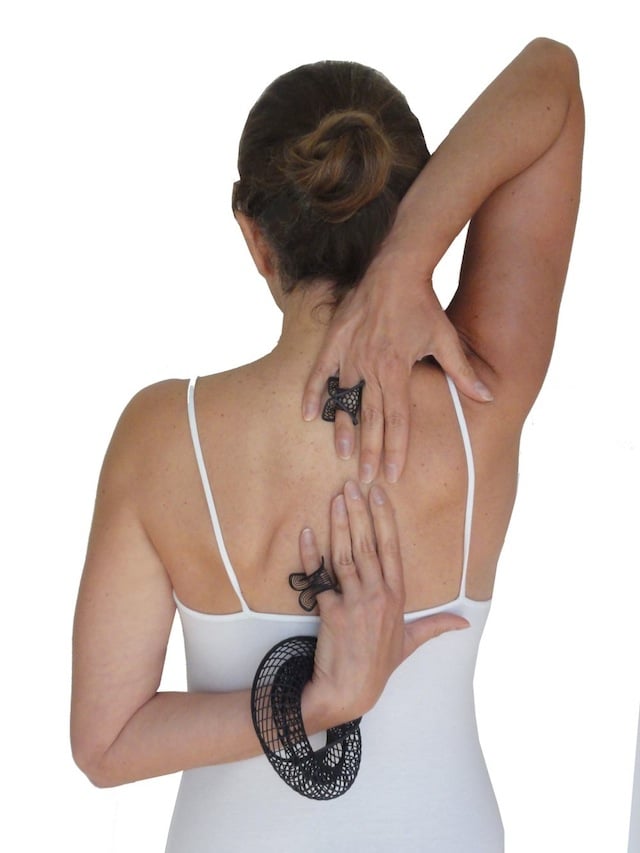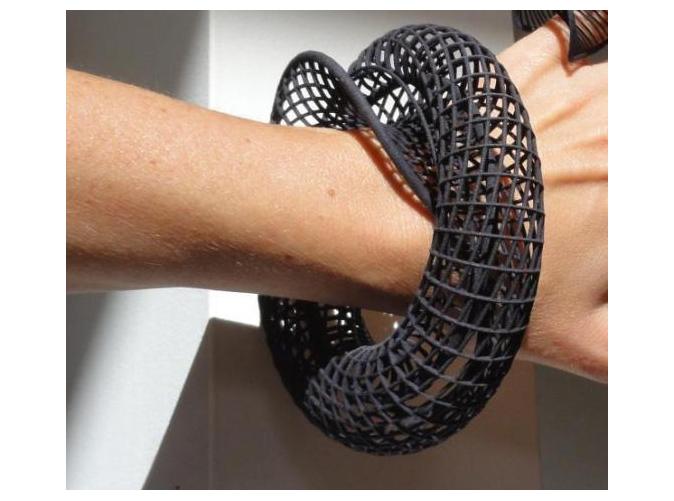
Tell us a little bit about yourself: Who are you? Where are you located?
I am an artist, author, designer and yoga teacher, working at the intersections between art science and technology. These practices, often considered divergent, find a common denominator in thinking of ourselves as a part of a system. For instance a yoga posture is about our body defining a geometric form changing in time and relating to space; human movement can also be thought of as a design solution. I have been living in New York for over two decades but I was born and grew up in Rome. Living in a city where you breathe geometry in every building and street, probably had a major influence in my work.
My design work is at different scales and created with media often considered divergent: from land art to video, performance and wearable objects. My explorations are also based on different disciplines and forms of human knowledge: philosophy, cosmology, biology and physics as interpreted by the poetry of images. Geometry as the algorithmic generation of forms is the common denominator of all my practices. I am interested in forms either found in nature, a shell, a sunflower, a leaf, or created by the human imagination, such a Moebius strip or a Triple Periodic Minimal Surface. I work with forms which can be created by a process and evolve from simplicity to complexity through a set of rules; similar to a language, where a sentence is created by linking words together. Similarly I combine a set of points in curves, curves in surfaces and surfaces are then articulated through geometric transformations. I started communicating my explorations in a more systematic and rigorous way by writing and illustrating books: SpaceTecture and Form Geometry Structure: from Nature to Design. My latest effort in publishing is the Mathematical Sublime a series of enhanced e-books where interactive multimedia art becomes a remotely available published product with a global worldwide distribution.
I started working with 3D design in architecture, as my formal degree is a masters in architecture. I have been working with 3D modeling for over twenty years using several different softwares, from AutoCAD to 3dMax, often writing scripts to customize built-in functionality. More recently I have been using Bentley GenerativeComponents, a parametric associative software, where C# scripts can be used to build geometric elements as well as a sequence of transformative operations. I find GC the best design tool so far for its flexibility; the change of parameters allows me to design wearable objects of different sizes and materials specifications using the same set of operations.
What brought you to 3D printing with Shapeways?
Who are your favorite designers or artists?
Leonardo, Filippo Borromini, Marcel Duchamp, Buckminster Fuller, Philip Stark and Kraftwerk. On Shapeways, I like Bathesba’s work a lot.
If you weren’t limited by current technologies, what would you want to make using 3D printing?
A leap in scale! I would also focus on materials suitable for outdoor use, waterproof and UV resistant. I’ve worked on proposals for solar lighting but the cost of realization of prototypes is not yet affordable.
Creativity, in any type of expression or medium, is very important in life. For me creative expression has often represented a means of survival and healing. Being able to make physical objects out of forms which would exist only in the virtual world adds another layer to creative expression.





Beautiful jewelry! Mesmerizing designs! Very inspiring!
a real poetry of form !
Lovely!
Daniela Bertol is a true Renaissance woman–multifaceted and multitalented in multimedia.
Not surprising because she was born and bred in the cradle of the original Renaissance.